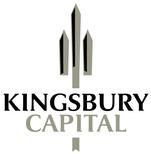 Kingsbury Capital was founded in mid-2007 with the goal of providing customer-centric asset management services to high net worth clients. The firm is comprised of well-seasoned investment management professionals each with 10 – 20 years of experience in the finance profession.
Kingsbury Capital was founded in mid-2007 with the goal of providing customer-centric asset management services to high net worth clients. The firm is comprised of well-seasoned investment management professionals each with 10 – 20 years of experience in the finance profession.
Rather than trying to “pick a bottom” or find stocks ready to “break out,” the firm believes “business momentum” is the key to successful investing. Thus, the firm screens for a variety of business momentum indicators including, for example:
- Increasing sales
- Increasing earnings
- Balance sheet improvement
Kingsbury manages Covestor’s new Tech and Communications model, which focuses on firms that are in the Technology and Communications infrastructure and services industry. The companies that are selected for this model will have a wide range of market capitalizations, but typically have a minimum market capitalization of $1 billion.
The firm describes its research process as such:
We start our process by running an industry-comparative screen for firms that are in the model already – while also keeping tabs on firms that have been previously screened and possibly rejected in the past. We also look for profitable firms, firms that trade above $15/share, and firms that have a positive chart pattern. We will typically only act on issues that have several years of price data. Lastly, we try to avoid firms that have a legacy ‘overhang’ of price action from prior years.
We aim to maintain a number of positions, varying from a low of 20 to a high of 40. We feel that below 20 positions will generate additional concentration risk, while over 40 will dilute potential returns per idea. We feel that a sufficient market-capitalization diversity can also be achieved within that range of ideas.
Our closing methodology focuses primarily on downside price action, and action relative to the benchmark index (i.e. – underperformance). We typically stop a loss at a 20% loss; we will also typically look to ‘trail-stop’ from the issue’s high-water-mark. (Note: The Covestor replication process does not consider stop losses or trailing stops when executing trades in subscriber accounts.) If a position experiences a negative fundamental event, we may exit before stops are hit. If we do not have an acceptable replacement security, the capital will move to a cash instrument. On the upside, we seek to maintain positions close to target weights – in other words, we will trim a position as it begins to move materially to the upside.
The model’s largest holdings (as of 8/9) include:
- IBM (NYSE: IBM)
- Syntel Inc (NASDAQ: SYNT)
- ACI Worldwide Inc (NASDAQ: ACIW)
- MICROS Systems, Inc. (NASDAQ: MCRS)
- DST Systems, Inc. (NYSE: DST)

